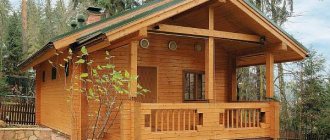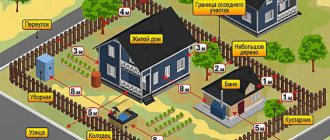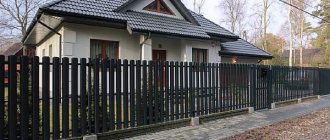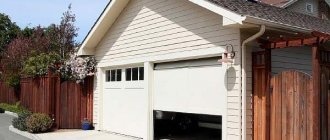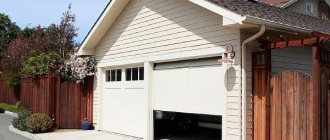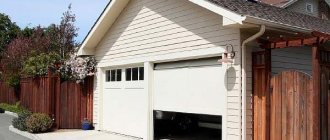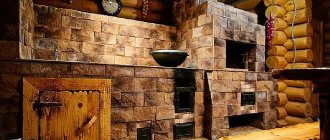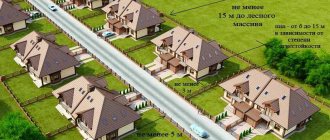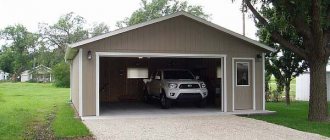When building a sauna on a site, it is necessary to maintain the distance from the house to the bathhouse in accordance with the prescribed SNiP (SP), SanPiN and fire safety standards. Firing a steam room can cause a fire both in SNT and on private housing construction lands. Based on this, the distance from the bathhouse to the house and other buildings on the site must be observed by law in 2021.
On a site in the private sector
Construction of buildings according to standards
In the Russian Federation in 2021, there is no general legislation that would establish uniform standards for private development and a range of fines for non-compliance with the law. Most of the SNiPs and SPs are not given the status of laws. By and large, these are construction, sanitary and fire recommendations, which are usually referred to in judicial practice.
In the suburbs
In SNiP and SP there are also conflicting standards for the planning of plots in a country house or in a private house. The starting point for land owners can be SNiP 30-02-97, as amended, which acts as a law.
The regulatory act lists requirements that apply to all types of land plots.
All requirements for the development project, including the standards for the location of the bathhouse on the site, contain SP 53.13330.2019 and SP 11-106-97. But these sets of rules do not have the official status of law; nevertheless, their implementation is mandatory.
Legislative and real differences between individual housing construction, SNT and DNO
Development documentation may include various types of land ownership with different subordination and rights:
- IZHS – individual housing construction;
- SNT – horticultural non-profit partnerships;
- DNO - dacha non-profit societies.
There are several types of non-profit societies and partnerships. All of them are subject to internal rules of development and ownership:
- do not have a police address;
- no project required for the house;
- buildings are seasonal, summer type of residence;
- registration only in extreme cases by court decision;
- the local administration does not provide energy and water supply systems;
- mortgage for purchase is not issued.
The construction of a bathhouse on a site located on the land of non-profit associations is approved by the board in accordance with the internal rules in force.
The fire safety rules regarding the distance from the bathhouse to the fence of neighbors on the side and behind remain unchanged:
- distance from the fence more than 1 m;
- from buildings 8 m.
Permissible distance between the bathhouse and buildings on the site
Roof runoff should not enter the adjacent area. All buildings and their location must comply with the requirements of the company’s internal charter and fire safety requirements.
A plot of land for individual housing construction is issued for the construction of a permanent residential building up to 3 floors high. The owner is exempt from property taxes for 10 years.
If during this time the construction of a permanent house is not started, then taxes will have to be paid in double amount, as for inappropriate use of the land.
The difference between individual housing construction and plots in non-profit partnerships:
- the station has a police address;
- a project is drawn up for the house and approved by the relevant authorities;
- after the construction of the house is completed, you can register yourself and your relatives in it;
- the development plan is regulated by SP 53.13330.2011, SNiP 30-02-97, SP 30-102-99;
- the local administration creates infrastructure, lays out life support systems;
- a mortgage loan is issued for the purchase of a plot;
- a plot with buildings can be used as collateral real estate;
- plots of individual construction are located within the city limits or on the territory of villages.
When registering the site, the house construction project is approved. At the same time, it is advisable to approve the general plan for the development of the site, the construction of ancillary buildings, a bathhouse, a drainage pit and other objects, indicating at what distance from the fence they will be erected.
The main regulatory document is SP 30-102-99. Planning and development of the territory of low-rise housing construction.
How many meters should there be from the bathhouse to the house?
Please note that the location of the bathhouse on the site is determined by construction and fire safety regulations, as it can pose a danger. When heating a sauna, there is a risk of fire.
How many meters do you need to retreat when building on your plot?
There are also sanitary concerns that runoff could get into the drinking water well and cause contamination. Smoke from a steam room can be a nuisance to neighbors if it is located too close to their property. You also need to consider:
- According to SanPiN standards, a bathhouse can be built from the house at a distance of 8 m. You also need to focus on the fire resistance category of buildings. Fire safety is an important standard here.
- According to the rules, you must retreat 1 meter from the fence of a private house. In this case, you need to dig a drainage ditch. When a bathhouse is heated in black, the risk of spontaneous combustion increases, so the distance should be increased to 1200 cm. When there is no ditch or centralized sewer system, the distance from the fence to the bathhouse on the site should be increased to 3 meters.
For measurements, the boundary is determined by the nearest part of the building. Measurements from the house are taken not along the foundation of a residential building, but along the protruding roof overhang.
Read: Safe distance from a cell tower to a residential building: norms and harm to health, law
At the summer cottage
Fire resistance of the building and distance from it
When determining at what distance to place the steam room, you need to start from the material of the buildings. According to fire standards, all buildings are divided into 3 main groups according to fire danger:
- Houses and buildings made of non-combustible materials: brick, concrete.
- Any buildings made of non-combustible materials with wooden roof elements.
- Timber frame buildings or entirely wooden houses.
A regulatory table indicating the distance from a bathhouse to a residential building (in meters) according to fire safety rules, SNiP (SP) and SanPiN is displayed below.
| Flammability category of the bath | House flammability category | ||
| 1 | 2 | 3 | |
| 1 | 6 | 8 | 10 |
| 2 | 8 | 10 | 12 |
| 3 | 10 | 12 | 15 |
The required distance between wooden buildings according to the standards is 15 meters. It is significantly greater than the minimum distance from the house to the steam room (8 m). This indicator is one of the main ones for construction. When figuring out at what distance from the house you can build a bathhouse, you need to build on this figure in order to minimize the possibility of a fire.
According to the table:
- Between brick buildings and houses with non-combustible elements - 6 m, but it is necessary to retreat 8 meters, according to the minimum acceptable SanPiN standards.
- A brick building with a wooden roof and the same steam room - 10 m.
- The distance between a brick house and a wooden sauna should be 10 m.
Indentations according to fire safety rules
Is it possible to make a steam room inside the house?
It is worth noting that on a dacha plot in a village or rural area, you can create a steam room inside a residential building when the plot belongs to the category of individual housing construction. Since wood deteriorates from high humidity, a Finnish sauna is perfect for installation inside the house. A steam room in a building will need to be approved first and then registered.
How to choose the ideal place for a bathhouse in your summer cottage
Drawing up a bathhouse construction project begins with choosing a suitable location. In addition to compliance with regulatory requirements, you need to think about the issue of convenience. The selected site should be functional, provide a convenient approach to the building to bring firewood, and of course not violate the overall design concept of the site. If the terrain is not level, you should make sure that the construction site will not flood during heavy rain or snow melting.
To simplify the selection of the ideal place to build a bathhouse, you need to take into account several fundamental nuances:
- Design features of the planned structure and desired dimensions;
- Nuances of shape and terrain;
- Soil characteristics;
- The nature of groundwater occurrence;
- The distance of the object from existing buildings and green spaces.
Compliance with fire and other regulations
Even if, due to its design features, the steam room does not belong to permanent buildings, its construction must comply with the requirements of documents in the sanitary and fire department.
Sanitary rules are designed to ensure health safety when using a building. One of the most important issues is the issue of the sewerage system. If the territory planned for the construction of a bathhouse does not provide access to a central sewer system, you will have to organize an individual drainage system with a well and a septic tank. An alternative option is preliminary wastewater treatment with subsequent disposal into the ground.
Additional information: in the case of an equipped central sewer system, the wastewater can be naturally connected to it.
What sinitarian rules must be followed:
- The chimney must function properly and be sealed.
- Uninterrupted operation of valves.
- Eco-friendly materials and insulation.
- Sophisticated ventilation system.
To comply with the requirements of fire safety standards, it is customary to rely on SNiP 01/21/97 in the current edition. The place with the highest risk of fire is the oven. Therefore, the safety of the structure must be ensured. The maximum temperature to which sienna stoves are heated should not exceed 120 degrees.
The walls adjacent to the stove must have additional protection in one of the available ways:
- Plastering with cement mixture on a pre-arranged grid;
- Galvanized sheet metal should cover the planes of average fire resistance;
- All wooden structures are impregnated with special compounds.
Distance from the bathhouse to the neighboring house
The norms of SNiP, SP and SanPiN do not establish differences between a residential building on the site and a neighbor’s dwelling. Fire safety standards do not provide for differences, since fire can spread through the fence.
Let us note once again what the distance should be from the steam room to a residential building:
- from 8 meters according to SNiP, SanPiN and fire requirements;
- black-fired firebox implies increasing the distance from the building to 12 meters, but is not a prerequisite;
- when both buildings are wooden, the distance increases to 15 meters.
Minimum fire clearances
To build a bathhouse in a country house in a village in compliance with the rules, ask the owners of the neighboring plot for the distance to a residential building.
Make sure there are additional construction orders from the district or locality administration. Local orders may clarify and supplement SanPiN, SP and SNiP at the discretion of the authorities.
Installation of different types of baths
Before erecting a structure, it is important to determine the type of future construction. Baths can be smoky or non-smoky, therefore, according to the regulations, the requirements for the first type of structure are as follows:
- Build taking into account the wind rose, since the wind can strongly blow smoke towards neighboring houses.
- Do not build in densely populated areas.
- Maintain a distance of 12 m from the bathhouse to the residential building.
If you plan to build a bathhouse that needs to be heated, then the distance from this building to the country house should be kept at 12 m. It is better if the building is located on the side of the site where the wind blows more intensely and frequently. This will further reduce the risk of fire hazard.
Smoke-free baths, or white baths, must be installed taking into account sanitary standards:
- away from the neighbor's house;
- arrange a ventilation system;
- waterproof the steam room.
Installing a building in white will significantly provide savings on the arrangement of a water supply system and sewerage system on one site. There are no norms in the legislation that prevent the placement of sauna structures together with residential buildings. In any case, it is better to coordinate such projects with architects and design specialists.
Combination of baths and other buildings
Modern baths are often combined with a garage structure, a residential building or a summer house. The legislation does not indicate anywhere that the construction of such structures is prohibited by regulations. Sanitary standards apply only to the construction of washrooms or toilets.
The distance from the bathhouse to the house is established by SNiP, SP and SanPiN standards. All standards have been developed for free-standing structures. A steam room in the form of a Finnish sauna is an extension, the operation of which is associated with certain risks:
- fire hazard;
- ingress of wastewater into the ground;
- soil contamination.
Fire standards for the distance from a bathhouse to various buildings are similar to sanitary standards, which are regulated by SNiP 30-02-97 as amended in 2021 and SP 53.13330.2011. Fire safety standards have not been established for grouped buildings and structures, including those located in neighboring areas.
Distance from the bathhouse to the border of the neighbor’s property
According to fire safety, the distance from the bathhouse to the fence and boundary should be from 1 m with a drainage ditch or sewer. If you have a wooden fence installed, it is recommended to increase the distance to 3 m, but this is only a recommendation.
Read: Distance from the fence to the neighbor’s buildings: new SNiP standards 2020-2021 at the dacha, in a private house
Capital bathhouse near the border of the site
A mandatory setback of 3 meters is provided if the bathhouse does not have its own separate sewer or drainage drain. The distance to the side of the fence at the border of the site, beyond which the roadway passes, is at least 5 meters.
If the capital sauna is located at a distance of 1 meter from the border of the site, it is necessary to equip drainage ditches and a sewer drain. The drainage system ensures that contaminated wastewater cannot enter the neighboring plot.
Rules and requirements for fire safety during the construction of a bathhouse
Fire safety standards define these buildings as buildings of class F3.6. Therefore, during construction the following standards must be observed regarding the distance of the object from the residential premises:
- if the roof of the house and bathhouse is made of non-combustible raw materials, and the buildings themselves are stone or brick, then the distance between them is eight meters;
- if the roof of a particular object is made of flammable material, then the distance will be ten meters;
- if the house and sauna are wooden or made of materials that quickly ignite, then a ten-meter indentation is needed;
- if the objects are multi-story (from two floors and above), then the distance will be fifteen meters.
If the bathhouse is connected to a sewer and drainage is installed, then the distance from the border will be one meter. Three meters, if this is not provided.
The distance from the neighbor's brick bathhouse will be six meters. If both buildings are made of wood, then the distance from each other will be fifteen meters. Local regulations should also be taken into account. The distance may be increased, so you need to send a request to clarify this data to the administrative regional center to which the site is assigned. You can also find out details from the head of SNT.
Where to build a bathhouse
The best place to build a bathhouse is on a hill in the depths of a summer cottage. When the steam room is located at a high point, it is easier to drain dirty water. But according to SanPiN, dirty water cannot be discharged into water bodies (rivers, lakes). The distance from the bath house in the country to the well is 12 meters, and to the reservoir – 20.
Beautiful house
It is advisable to orient the entrance door to the steam room to the south, and the windows to the south and east. Then the sauna will warm up easily, and the room will always be light.
But there is another unofficial rule - to place the entrance towards the residential building in order to control the kindling process from afar. When building in a country house, take into account the direction of the wind so that the smoke from the steam room does not blow towards residential buildings.
Additional rules for construction
When determining where to build a sauna, take into account not only the distance to a residential building and the boundaries of the site in SNT or individual housing construction. There are other requirements for land planning:
- There should be no tall trees closer than 4 m from the steam room;
- the minimum distance to buildings where animals are kept is 4 meters;
- it should be no closer than 12 m from the well, pool, well;
- you need to retreat 12 meters from the septic tank, compost pit, toilet;
- distance to the park, forest area – 5 m;
- permissible distance from the reservoir – 20 m (defined by the Water Code);
- You cannot build a sauna over an underground gas pipeline or heating main.
Standards for the location of objects in the private sector according to SNiP (SP) and SanPiN.
You can install a bathhouse at a distance of 4–12 m from other outbuildings.
The above norms in meters work not only on one site, but taking into account the adjacent territory of neighbors. When selecting a construction site in SNT or individual housing construction, look at the layout of your neighbors’ site to avoid violations.
Please note that on a private housing construction site it is allowed to build a bathhouse on a permanent foundation. But SNT only allows temporary buildings on the site. For example, you can put a mobile sauna in the form of a barrel in the garden, or a trailer. A sauna house will be considered a non-permanent structure if it is installed on several supports or on a light foundation.
We must not forget that in suburban areas of individual housing construction or SNT, paired rooms with a height of more than 3 floors (the height from the ground to the ridge of the roof is 12 m) and an area of more than 1,500 square meters are prohibited.
Read: At what distance from the fence can a garage be built: SNiP standards and the 2021 law in SNT and individual housing construction
The need for project approval
When planning to build a bathhouse, it is important to know that you will need a construction permit from the relevant supervisory authorities.
Notification of intention to build will be required in the following cases:
- The location of the bathhouse is planned in the format of an extension to a residential building on the site or to a cottage. In such a situation, it is necessary to make changes to the building plan, which is subsequently subject to approval by the authorized bodies. The increase in usable area will be taken into account, the impact of the attached facility on the strength characteristics of the foundation and enclosing structures will be assessed, as well as compliance with sanitary standards and fire safety requirements;
- the project provides for an additional recreation room, providing a sleeping area or a second floor (attic room);
- It is not a private bathhouse planned, but a complex used for commercial purposes. Only after this is it allowed to conduct legitimate business.
If the bathhouse building is planned not as a permanent structure, but as a temporary mobile structure that can be easily dismantled at any time, with a non-buried lightweight foundation, there is no need to obtain a building permit.
If you do need a permit document, it is important to know where to go and what actions to take. Owners of land plots, including in the territories of SNT, should visit local government bodies, having previously collected the established package of documentation:
- an application completed in the prescribed form for permission to build within one’s land plot;
- confirmation of the owner's ownership of the land;
- detailed site plan;
- owner's identification document;
- a set of project documentation with an explanatory note, detailed information about existing communications systems, a layout diagram of all existing facilities on the site;
- a positive conclusion if an expert assessment is required.
If the approval procedure is controlled not by the owner, but by his representative, the latter must have a power of attorney to carry out such actions. Municipal authorities usually review applications within a week and issue a final verdict. The duration of a building permit is ten years from the date of its receipt. No state fee is required, the document is issued free of charge.
Additional information: capital-type buildings, regardless of their purpose, are subject to registration so that they are legally owned. It is the right of ownership that allows the owner to fully dispose of his property.
Neighbors built a bathhouse with violations
There are cases when neighbors put the steam room too close. According to the law, you can oblige your neighbor to move the steam room if the distance to the neighbor’s bathhouse on the property is less than the accepted standards.
Not far from the city in the countryside
The distance from the bathhouse on your neighbors' property to the buildings on your land must meet the same standards as for you. Property owners are not required to file a complaint against the residents of a neighbor's house.
When the steam room does not cause you discomfort, you can keep the distance between the house and the bathhouse as is. Consent to place a building close to the fence must be given in writing. Oral agreements have no legal force in proceedings. It is advisable to secure the agreement by notary.
When your neighbor’s bathhouse is located too close to the fence, this will not be a hindrance to you registering ownership of the land and the house. To coordinate the documents, you will only need a site plan without taking into account the neighboring buildings and their residential building.
